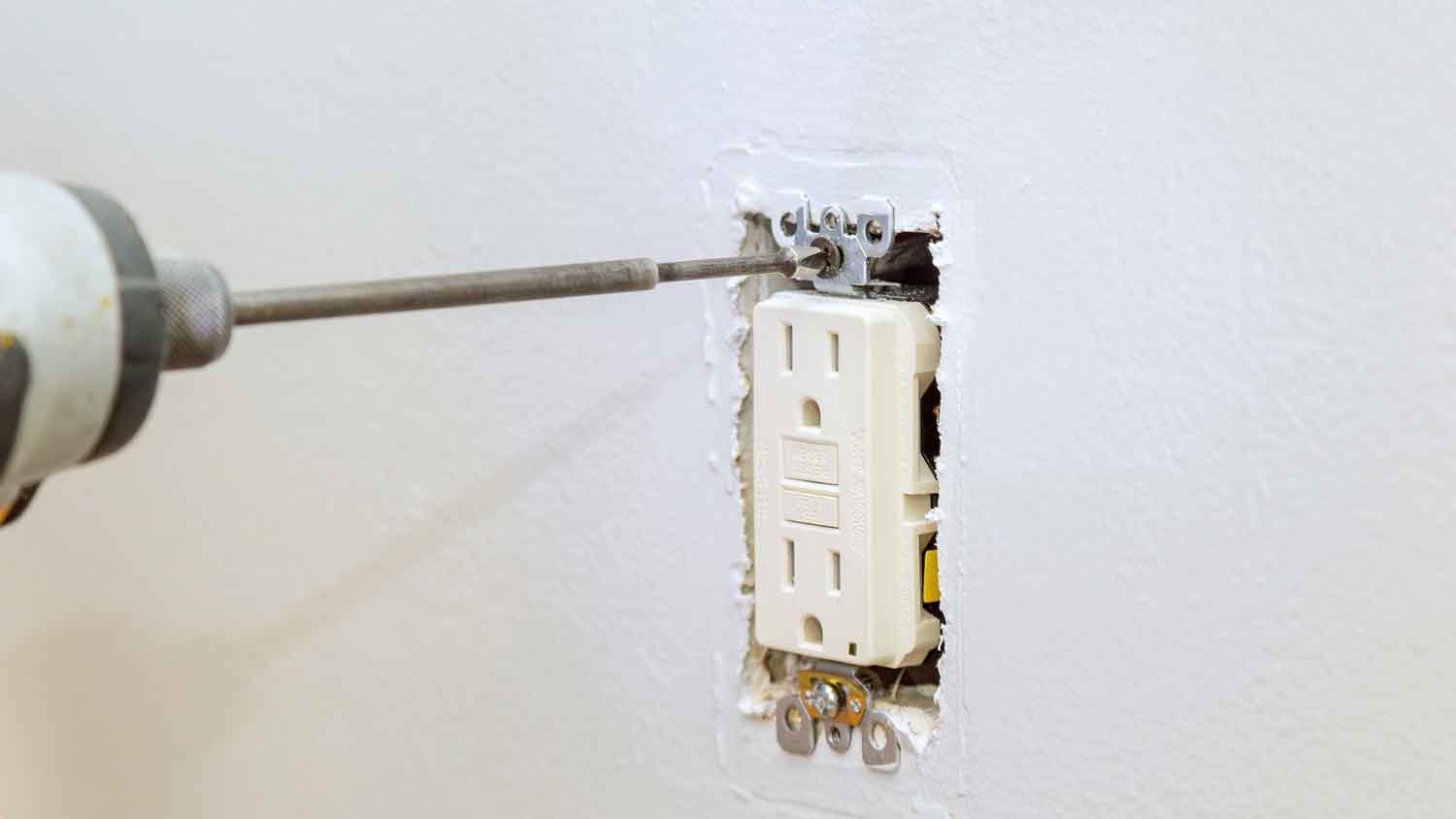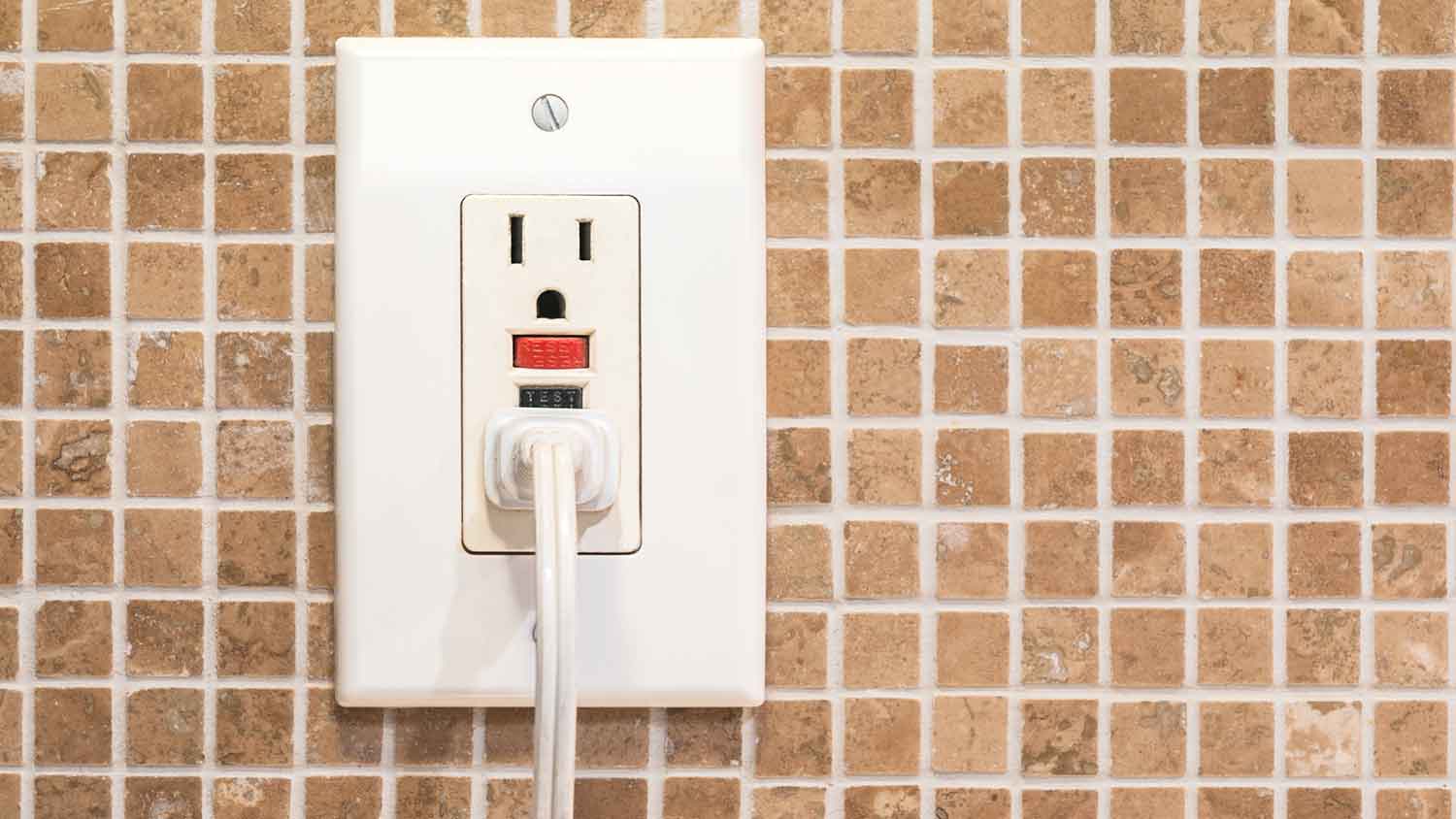Outlets Not Working in One Room? Here’s How to Solve
Track down the reason the outlets aren’t working in one room


Outlets not working in only one room can be due to a variety of factors.
Improper working outlets can be a fire hazard.
Outlets typically last 15 to 25 years.
You're bustling around going about your day when you plug in a device, but it isn't getting any power. The rest of your home is operating as usual, but the outlets are not working in one room in particular.
Outlets not working correctly can be a dangerous sign and stem from various causes. In some cases, you may be able to figure out and fix the issue yourself, but dealing with electricity is risky business. In most cases, it's best to call in an electrician to diagnose and fix the issue. Here are the main reasons outlets quit working, along with some troubleshooting tips.
1. Tripped Circuit Breaker

A common reason for outlets not working in one room is because the circuit breaker tripped. Circuit breakers are designed to automatically cut the current flow of electricity to the circuit in the event it becomes overloaded. This protective tool can help prevent electrical fires, but if your circuit breaker trips often, there’s likely a larger issue.
You can troubleshoot this issue yourself by locating the electrical panel and checking to see if any breakers are in the "off" position. If so, you can switch them back to the "on" position and see if that solves the issue. If that method doesn’t resolve the one-outlet problem, contact a local electrician and hire them to inspect and repair it.
2. Loose Wires

All the outlets that are on the same circuit can be affected by loose wires. You should never touch an open outlet, but one indication of a loose wire is if it feels warm when your hand is near it. Loose wires can be an electrical fire hazard. Although you can check the wiring yourself after turning the breaker off, it's best to call in a professional electrician to avoid the risk of electrocution.
3. Blown Fuse
If your home was built during or before the mid-1960s, you may have a fuse box instead of a circuit breaker. Fuse boxes work by interrupting electrical current when it is short or overloaded. So, a blown fuse can be the cause of outlets not working in one room.
Remember, dealing with fuse boxes or anything electrical is extremely dangerous. We highly recommend calling in a professional electrician to deal with this issue. If you try checking for blown fuses yourself, shut off the main electrical power to the system before checking the fuses. If fuses are labeled correctly, locating and checking to see if it's blown will be easier. If a fuse is blown, it will appear cloudy, scorched, or the metal piece inside it will be broken.
4. Tripped GFCI Outlet

A tripped GFCI outlet can be the cause of outlets not working in one room. These types of outlets protect household members from electrical shock in rooms where water is present, such as bathrooms, kitchens, and laundry rooms.
Ensure no water or moisture is present, and you aren't touching water before unplugging devices and trying to reset the outlet. If it's safe to do so, press the reset button located on the front of the outlet. It should click, and your devices should work if that is the cause of the issue.
5. Faulty or Worn Out Outlets
In some cases, you may have a faulty outlet. It may not be as common as the other causes, but it can happen. The other reason is your outlets are old. Typically, outlets last 15 to 25 years, but they can wear out faster from overuse. One faulty or worn-out outlet may trip the breaker, which will cause the outlets not to work in one room.
If you notice sparks when you plug in an item, discoloration, smoke, or burning plastic odor coming from an outlet, they must be replaced by a professional electrician immediately.
Cost to Replace an Electrical Outlet
Replacing an electrical outlet costs anywhere from $125 to $200, depending on the size and complexity of the job. Some outlet types, like a recessed outlet, are more expensive to replace than others. Additionally, replacing an outlet may require related tasks to ensure your electrical system is up to snuff. Upgrading an electrical panel from 60 or 100 amps to 200 amps costs between $800 and $4,000, while repairing or replacing a loose switch costs an average of $150. Adding a new circuit comes in at approximately $700.
DIY vs. Hiring a Pro
Unless you have serious electrical know-how, this is a job best left to a professional. Local electricians will be experienced and licensed, ensuring a smooth repair or replacement process. This is for several reasons. Electricity is dangerous, and a misstep can lead to more problems. If you mess up a DIY electrical job and experience a house fire, your home insurance may not cover it.
Frequently Asked Questions
A dead outlet can be caused by a hazardous electrical issue and can spark an electrical fire. It's vital to figure out why the outlet isn't working as soon as possible and get a professional electrician to fix it immediately.
Just like apples in a bunch, one bad outlet can cause other outlets to stop working. This is especially true if the outlets are connected in a series on the same circuit. When one outlet develops a fault, it can spread to every outlet downstream of the original.
Plug-in appliances, such as fans, hair dryers, irons, and vacuums, can cause a circuit overload and trip your circuit breaker. Older electrical systems may not support newer appliances, or the appliances may have internal damage. You need to determine whether the issue stems from the outlet or the appliance so you know which needs to be repaired or replaced.



- Home Generator Repair
- Lamp Repair
- Electric Repair
- Generator Installation
- TV Antenna Services
- Emergency Electricians
- Commercial Electricians
- Attic Fan Installation
- Attic Fan Repair
- Exhaust Fan Installation
- Electric Inspectors
- Subcontractors
- Electrical Construction
- EV Charger Installer
- Chandelier Installation
- Doorbell Installation
- Bathroom Fan Installation
- Ring Installers
- Electrical Panel Upgrade
- How to Fix an Outlet That Stopped Working When the Breaker Has Not Tripped
- 4 Ways to Fix Bathroom Outlets That Are Not Working
- How to Reset an Outlet Without a Reset Button
- Why Is My Outlet Hot?
- Is a Dead Outlet Dangerous? What You Need to Know
- How to Fix Loose Outlets: A Step-by-Step Guide
- How to Wire an Outlet From Another Outlet in 9 Steps
- Why Are My Lights Out But the Breaker Is Not Tripped?
- 12 Electrical Outlet Types You Can Find in Your Home
- Is It Dangerous If a Circuit Breaker Keeps Tripping?










